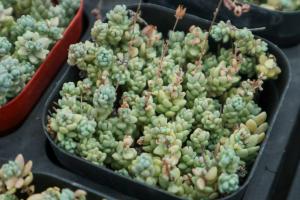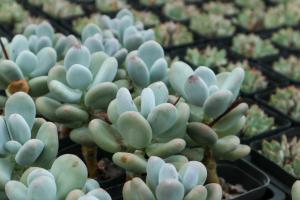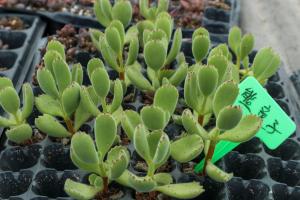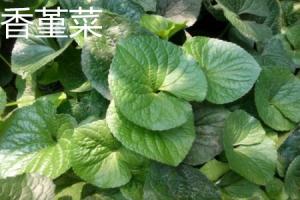Rose
roses can be seen everywhere in the streets. When neighbors prune branches in Huahua village every summer, everyone will exchange some varieties they don't have and go home for cutting. Now there are about 50 varieties in front of Huahua's own house< span>
(author: Maomao, source: Sina blog)
Cutting method
1. The easiest part of rose cutting is, of course, the post flower branches, residual flowers and the following two leaves. They can't be used. Cut them off

(author: daisy229)
2. Cut the branches into several small sections. The upper part shall be cut horizontally above the bud point, and the lower part shall be cut obliquely about 0.5-1cm away from the bud point. The incision shall be smooth and not rough. Tip: be sure to use very sharp blades or scissors, and bake and disinfect with a lighter in advance

3. Cut off the excess leaves on the branches, leaving only 1-2 leaves in each section, and cut off half of each leaf to reduce water evaporation, otherwise the branches are easy to dehydrate and lose activity

(author: daisy229)
4. Outdoor branches inevitably carry some bacteria, which will affect their survival. Therefore, all the treated branches need to be soaked in carbendazim solution for 10-15 minutes for disinfection and sterilization

5. After disinfecting the branches, we dilute the rooting agent with water, then mix it into the bottom ash (plant ash), stir it into a paste, and apply it to the oblique incision at the lower end of the branches to disinfect and promote rooting

(author: daisy229)
6. Cut the treated branches into the soil soaked in advance. The soil can be vermiculite, perlite, peat soil, fine sand, rice husk carbon, etc. one principle is clean and breathable without bacteria. Many people do not work well when cutting rose

(author: daisy229)
7. After cutting, spray water on the leaves to moisturize them, and then put them in a cool and ventilated place. Don't expose to the sun. Spray water on the leaves to moisturize them 1-2 times a day. The soil remains slightly wet. You can put a tray at the bottom of the basin and add water in the tray to make the soil absorb water automatically from the permeable hole at the bottom of the basin. You can also put them in a large plastic bucket to moisturize them

(author: daisy229)
8. Indoor cutting can take root in about 15 days when the temperature is not higher than 28 degrees and not lower than 20 degrees

(author: daisy229)
9. After rooting, it can be transplanted into a large basin

(author: daisy229)
Triangle plum
Flower friends in the South see the triangular plum blossom wall on the roadside. Do they want to move home? Don't envy. Learn the following cutting methods. You can also have a triangular plum blossom wall. Hurry up
Cutting method
1. Prepare some breathable and loose soil before cutting. You can use peat soil, mixed with vermiculite and river sand

2. The branches of Prunus deltoides, which have been healthy for more than 1 year, are cut into several small sections, each section is about 7-10CM, with 1-2 buds. Most of the leaves are removed, and only 2-3 pieces can be left to reduce water evaporation

3. Dip the lower end of the branch with water, then dip it with rooting powder, and then insert the lower end of the branch into the soil and water it through

4. After cutting, cover a layer of fresh-keeping film on the top of the flowerpot and put it in a ventilated and cool place. Now it's hot, you can tie a few small holes in the film for ventilation. After about 2 weeks, the branches of trigonometry plum will take root and transplant them into the flowerpot after taking root

Wisteria
Huahua has heard from Huayou more than once that she wants to plant Wisteria. In fact, wisteria cutting is not difficult. If you see a neighbor's house, you can ask for a branch to cut
Cutting method
1. Cut off the robust and healthy 1-2-year-old Wisteria vines, and cut each section into about 15 cm cuttings

(author: fire2zhang source: Wisteria bar)
2. If there are leaves and new buds on the cuttings, cut them off to prevent nutrient consumption, then soak the cuttings in carbendazim solution for 5-10 minutes, and then immerse the lower part in rooting aqueous solution for about 20-30 minutes

(author: fire2zhang source: Wisteria bar)
3. The bottom of the soaked branches is directly inserted into the soil. The soil is not required to be clean and free of bacteria. It is best to spread them in the sun for 2 days in advance

(author: difficulty in finding organization source: Wisteria)
4. The upper cut of branches shall be wrapped in plastic bags to avoid water evaporation and affect survival

(author: difficulty in finding organization source: Wisteria)
5. Place the cutting flowerpot in a cool and ventilated place, do not expose to the sun, keep the soil slightly moist, and pinch off the buds if there are no long roots

(author: difficulty in finding organization source: Wisteria)
6. Wisteria takes root slowly. It takes about one month. You must be patient. After taking root, you can let it germinate. When you see the sun, it grows very fast

(author: xiaotuhome: Wisteria bar)
Fig
Recently, fig is on the market. It is delicious, but expensive, and difficult to store. What is sold on the market is not very fresh. If you can plant a fig at home and eat it as you pick it, isn't it great? When you don't eat fruit, the leaves of figs can also decorate your home, which is more beautiful than common foliage plants

Fig cutting method
1. Fig can be cut all year round (except in northern winter). When cutting, strong branches without diseases and insect pests should be cut. Each branch is about 15-20 cm, and 2-3 leaves remain on it

2. Soak the cut branches in clean water for 2-3 hours, wash the dust and dirt on the surface, and then put the lower end of the branches in rooting agent solution for 6-10 minutes

(author: tianyaoxian999 source: Fig bar)
3. The highest success rate of fig cutting is the river sand. Before using the river sand, it is best to rinse or expose it to the sun with carbendazim to kill and sterilize

4. Find a plastic bottle, cut off the upper part and leave only the half part, tie several permeable holes at the bottom of the bottle, fill the lower part of the plastic bottle with river sand, water and water thoroughly

5. Poke a few small holes in the river sand with your fingers, insert the lower part of the treated fig branches into the small holes, then slightly compact it with the sand around the hole, and finally place it on the East and West balconies with astigmatism and ventilation

(author: tianyaoxian999 source: Fig bar)
6. Now the temperature is high and rooting is fast. We can take root in about 10-20 days. We can clearly see the white roots through the wall of the plastic bottle

(author: tianyaoxian999 source: Fig bar)
7. Cut the plastic bottle, take the rooted fig with the original soil lump, and transplant it intact into a deep flowerpot. Pay attention to ensure sufficient light and water. When you see that the leaves are wilting, pour them through, but don't accumulate water

(author: tianyaoxian999 source: Fig bar)
Osmanthus fragrans
Sweet scented osmanthus smells great. It's also a hot flower, but it's a little expensive. However, you can use the sweet scented osmanthus trees on the roadside. Sometimes you can pick up the branches and go home quickly
1. The cuttings of Osmanthus fragrans should preferably be the stronger lignified branches born in that year

2. The soil for osmanthus cutting can be peat soil, mixed with a handful of sand, or vermiculite to keep water and breathe at the same time

3. Cut the branches of Osmanthus fragrans into 10-20 cm long cuttings, leave 2-3 leaves at the upper end, remove the leaves at the lower end, and cut the incision into a horseshoe shape

(author: Meiyuan bamboo slips)
4. Divide the branches of Osmanthus fragrans into 6cm × With a plant spacing of 6cm, the lower end of the branch is inserted into the soil, and the buried part accounts for about 2 / 3 of the length of the branch, which is watered through

(author: Meiyuan bamboo slips)
5. Put the cuttings in a place with astigmatism and ventilation, cover them with film, and spray water frequently to improve the humidity

6. Generally, one or so branches can take root

Rhododendron
Rhododendron is also a very common flower in the national green belt. There are many varieties, and the flowering season is different. If there is a favorite variety, you might as well pick up a branch and try cutting at home according to the flower method when the Greening Master prunes it

(author: Shao Hongxia)
1. The cutting of Rhododendron can be carried out basically in a year. The activity of branches is the strongest from August to September and April to may, and the temperature is appropriate, and the cutting survival rate is very high

(author: Qiusheng in the wilderness; source: azalea bar)
2. Rhododendron cutting soil is generally mixed and prepared according to peat soil: Pastoral soil: coconut bran = 4:3:3. Before formal cutting, the soil is watered thoroughly, and then several small holes are inserted on the soil surface

3. Use sharp scissors to cut the branches of the cuckoo that are strong and free of diseases and pests. The service life of the branches is about half a year to one year
Cut the branches into several small cuttings, each about 8 cm. Cut off all the leaves at the lower part and half the leaves at the upper part. Place the lower part of the pruned branches in the rooting powder solution for about 5 minutes
 、
、
(author: Liu Tiezhi, source: Yuhua Valley)
4. Insert the Rhododendron branch into the small hole, compact it slightly, and then pour it once to permeate the water. You can also spray it with carbendazim solution for disinfection and sterilization

5. After cutting, spray more water to moisturize, cool and astigmatism, and do not direct

6. Keep the soil slightly moist. When the soil is a little dry, spray water quickly. About 3-4 weeks, the cuckoo will take root! After rooting, transplant it into a flowerpot and raise it

(author: stubborn radish Lu Qi) source: Flower bar)
Camellia
The big and beautiful camellia is also loved by many people. There is a variety control around the camellia. When you see a variety you don't have, you have to exchange branches and cuttings with others. If you don't achieve your goal, you won't stop. You're crazy
1. Camellia branches that grow within half a year are the easiest to survive. The buds between leaves are relatively full, and there are no diseases and pests

(author: Jinhua Huayou hlj# source: Shandong bonsai bar)
2. Cut the branches of Camellia into several small sections, remove the bottom leaves, keep two leaves on the upper part, and cut half of the two leaves. Soak the trimmed branches in the aqueous solution of carbendazim: water = 1:1000 for 5-10 minutes

(author: imagine creating extraordinary source: Camellia bar)
3. For the matrix of cutting camellia, you can choose sand or perlite, put the sand into the basin, pour it into water, and poke several small holes on it with a wooden stick

4. Insert the branches into the hole, bury them, compact them, pour them with water once, then cover them with a layer of fresh-keeping film and put them in a cool and ventilated place. Open them at noon every day and spray water to moisturize them. It can take root in a few weeks. After taking root, it can be transplanted into the flower pot for normal maintenance

(author: Liang Tian, source: Sina blog)
Hydrangea
Hydrangea is very common on northern roads. It opens in a large area, which is particularly spectacular! Huahua can't help taking pictures every time she passes by. In fact, Hydrangea has just lost, which is a good season for cutting. Let's make use of it quickly
(author: Maomao, source: Sina blog)
1. Cut off the flowered Hydrangea branches with a sharp knife. Be sure to be fast, accurate and ruthless. Cut at a 45 degree angle to make the incision as smooth as possible

2. Leave 2 blades above the oblique cut wound, and then cut flat above the blade

3. Cut these two leaves in half to reduce water evaporation

4. Insert the treated branches into the loose and breathable sandy soil, pour carbendazim solution once to moisturize, and spray water on the soil surface 1-2 times a day to moisturize

5. Keep the soil surface slightly moist. In about 15-20 days, the branches can take root. After taking root, transplant them into a large basin

Hibiscus
Hibiscus is a very common flower in the South and North. It has a large amount of flowers, looks good, and has a long flowering period. More importantly, it is very thick. The South can also bloom all year round. Today, Huahua will take Hibiscus as an example to introduce cutting methods

Cutting method
1. Cut strong branches of small hibiscus, with a service life of less than half a year to less than a year

(author: broken hole 1916; source: Little Hibiscus bar)
2. Cut short the branches of Hibiscus, about 5-8 cm in each section, soak carbendazim solution for about 2-5 minutes, and then take them out to dry

3. Prepare perlite and vermiculite, mix them in the ratio of 1:1, then put them into a disposable paper cup and pour them thoroughly

4. Insert the branches into the soil and put them in a cool and ventilated place. Don't expose them to the sun

(author: Wen Wen; source: Sina blog)
5. In a few weeks, the little Hibiscus will take root

(author: Wen Wen; source: Sina blog)
6. Besides cutting with soil, it is easy to plug roots with foam water. p>

(author: rong0322 source: moshang flower)
7. After taking root, the hibiscus can be transplanted into the flower pot for maintenance. After that, it should be placed in a well lit place, receive sufficient light and maintain ventilation
(author: rong0322 source: moshang flower)
Catharanthus roseus
Catharanthus roseus is also a common flower in the green belt, and cutting is very easy and solid

(author: Linglong flower blooming source: stepping on the flower line)
Cutting method
1. Cut off the healthy shoots of Catharanthus roseus, about 5-7 cm. If there are no diseases and pests, cut off half of the leaves

2. Find a plastic bottle, buckle a square hole in the middle of the bottle, fill the hole with vermiculite, pour water through it, and then insert the branches of Catharanthus roseus into the vermiculite

(author: Linglong flower blooming source: stepping on the flower line)
3. Put the cut Catharanthus roseus in a place with astigmatism and ventilation, and often spray water to moisturize

(author: Linglong flower blooming source: stepping on the flower line)
4. In about 10-15 days, Catharanthus roseus can produce white roots! After rooting, transplant it to a big pot to raise it

(author: Linglong flower blooming source: stepping on the flower line)

 how many times do yo...
how many times do yo... how many planted tre...
how many planted tre... how many pine trees ...
how many pine trees ... how many pecan trees...
how many pecan trees... how many plants comp...
how many plants comp... how many plants can ...
how many plants can ... how many plants and ...
how many plants and ... how many pepper plan...
how many pepper plan...






























